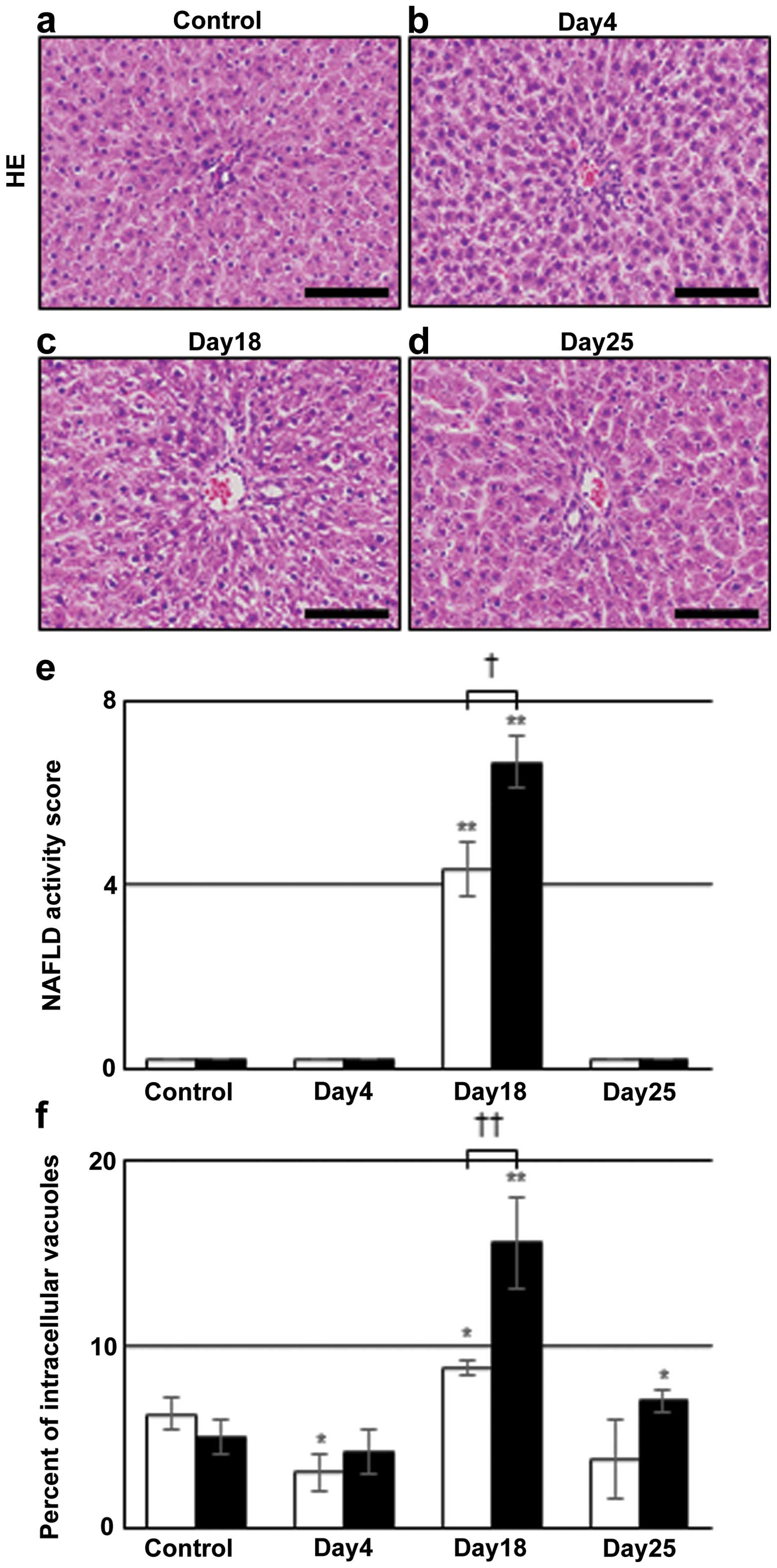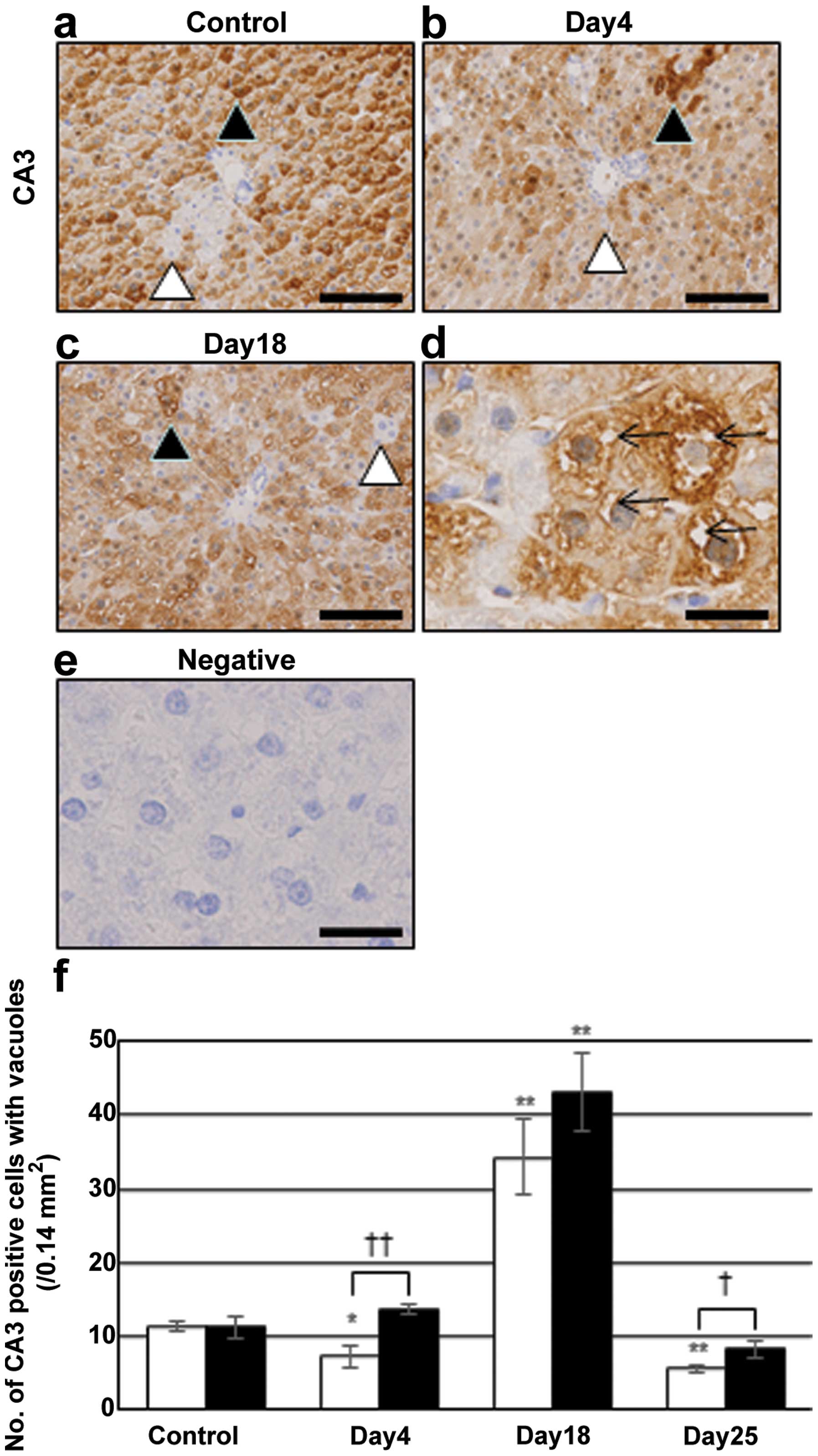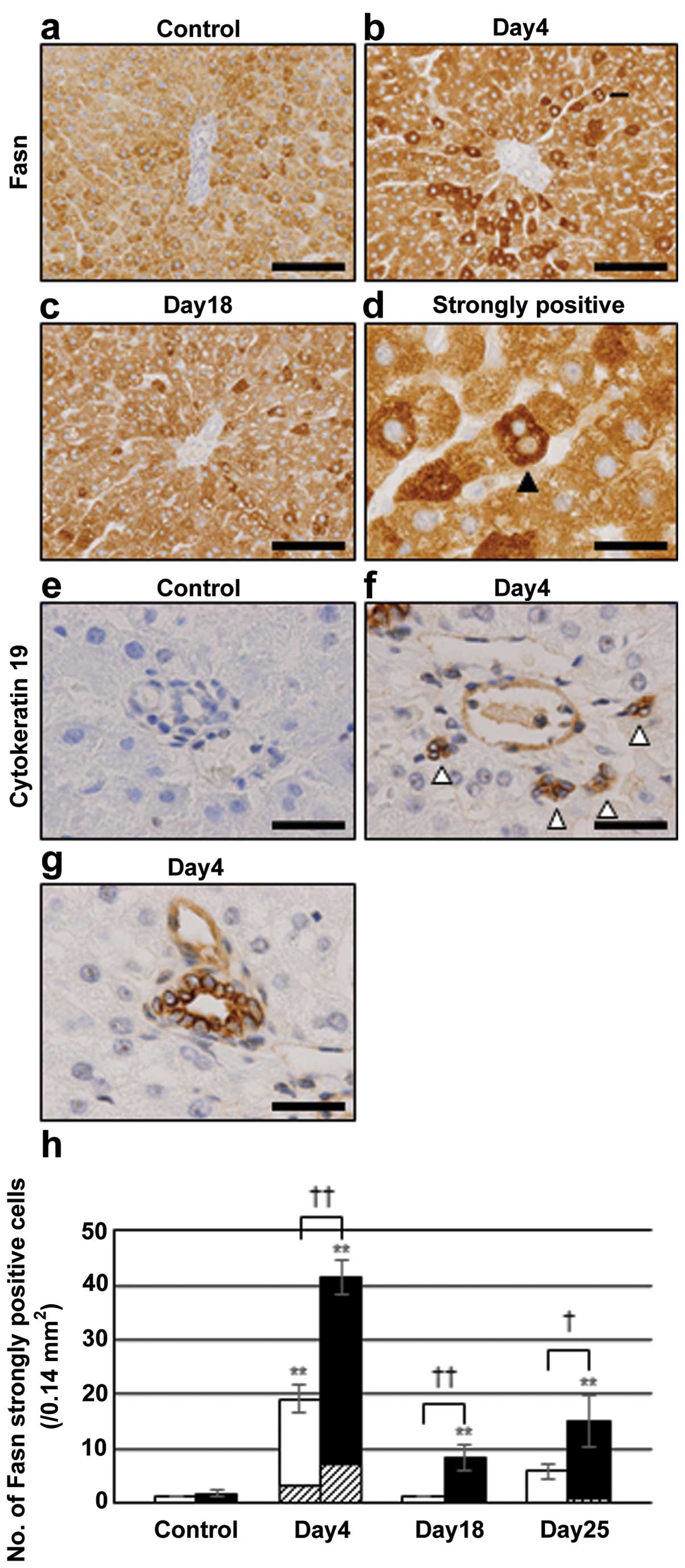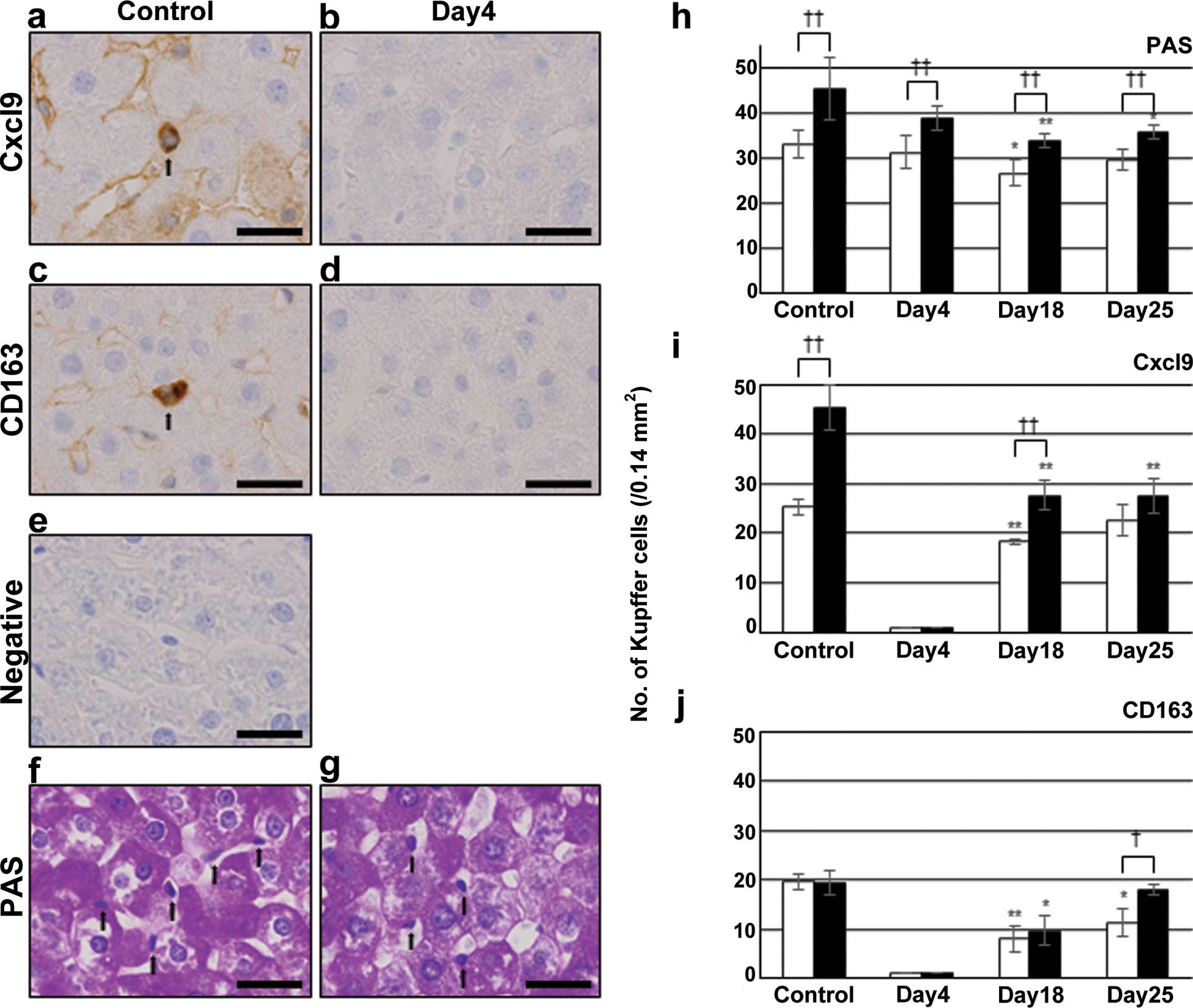|
1
|
Ohlsson B and Pålsson B: Follow-up after
colorectal cancer surgery. Acta Oncol. 42:816–826. 2003. View Article : Google Scholar
|
|
2
|
Khatri VP, Petrelli NJ and Belghiti J:
Extending the frontiers of surgical therapy for hepatic colorectal
metastases: Is there a limit? J Clin Oncol. 23:8490–8499. 2005.
View Article : Google Scholar : PubMed/NCBI
|
|
3
|
Fong Y, Kemeny N, Paty P, Blumgart LH and
Cohen AM: Treatment of colorectal cancer: Hepatic metastasis. Semin
Surg Oncol. 12:219–252. 1996. View Article : Google Scholar : PubMed/NCBI
|
|
4
|
Mathijssen RH, van Alphen RJ, Verweij J,
Loos WJ, Nooter K, Stoter G and Sparreboom A: Clinical
pharmacokinetics and metabolism of irinotecan (CPT-11). Clin Cancer
Res. 7:2182–2194. 2001.PubMed/NCBI
|
|
5
|
Carrato A, Gallego J and Díaz-Rubio E:
Oxaliplatin: Results in colorectal carcinoma. Crit Rev Oncol
Hematol. 44:29–44. 2002. View Article : Google Scholar : PubMed/NCBI
|
|
6
|
Douillard JY, Cunningham D, Roth AD, et
al: Irinotecan combined with fluorouracil compared with
fluorouracil alone as first-line treatment for metastatic
colorectal cancer: A multi-centre randomised trial. Lancet.
355:1041–1047. 2000. View Article : Google Scholar : PubMed/NCBI
|
|
7
|
Bismuth H, Adam R, Lévi F, Farabos C,
Waechter F, Castaing D, Majno P and Engerran L: Resection of
nonresectable liver metastases from colorectal cancer after
neoadjuvant chemotherapy. Ann Surg. 224:509–522. 1996. View Article : Google Scholar : PubMed/NCBI
|
|
8
|
Fernandez FG, Ritter J, Goodwin JW,
Linehan DC, Hawkins WG and Strasberg SM: Effect of steatohepatitis
associated with irinotecan or oxaliplatin pretreatment on
resectability of hepatic colorectal metastases. J Am Coll Surg.
200:845–853. 2005. View Article : Google Scholar : PubMed/NCBI
|
|
9
|
Vauthey JN, Pawlik TM, Ribero D, et al:
Chemotherapy regimen predicts steatohepatitis and an increase in
90-day mortality after surgery for hepatic colorectal metastases. J
Clin Oncol. 24:2065–2072. 2006. View Article : Google Scholar : PubMed/NCBI
|
|
10
|
Houghton PJ, Cheshire PJ, Hallman JC,
Bissery MC, Mathieu-Boué A and Houghton JA: Therapeutic efficacy of
the topoisomerase I inhibitor
7-ethyl-10-(4-[1-piperidino]-1-piperidino)-carbonyloxy-camptothecin
against human tumor xenografts: Lack of cross-resistance in vivo in
tumors with acquired resistance to the topoisomerase I inhibitor
9-dimethylaminomethyl-10-hydroxycamptothecin. Cancer Res.
53:2823–2829. 1993.PubMed/NCBI
|
|
11
|
Innocenti F, Undevia SD, Iyer L, et al:
Genetic variants in the UDP-glucuronosyltransferase 1A1 gene
predict the risk of severe neutropenia of irinotecan. J Clin Oncol.
22:1382–1388. 2004. View Article : Google Scholar : PubMed/NCBI
|
|
12
|
Welsh FK, Tilney HS, Tekkis PP, John TG
and Rees M: Safe liver resection following chemotherapy for
colorectal metastases is a matter of timing. Br J Cancer.
96:1037–1042. 2007. View Article : Google Scholar : PubMed/NCBI
|
|
13
|
Yeh MM and Brunt EM: Pathology of
nonalcoholic fatty liver disease. Am J Clin Pathol. 128:837–847.
2007. View Article : Google Scholar : PubMed/NCBI
|
|
14
|
Kleiner DE, Brunt EM, Van Natta M, et al:
Nonalcoholic Steatohepatitis Clinical Research Network: Design and
validation of a histological scoring system for nonalcoholic fatty
liver disease. Hepatology. 41:1313–1321. 2005. View Article : Google Scholar : PubMed/NCBI
|
|
15
|
Dorn C, Riener MO, Kirovski G, Saugspier
M, Steib K, Weiss TS, Gäbele E, Kristiansen G, Hartmann A and
Hellerbrand C: Expression of fatty acid synthase in nonalcoholic
fatty liver disease. Int J Clin Exp Pathol. 3:505–514.
2010.PubMed/NCBI
|
|
16
|
Baffy G: Kupffer cells in non-alcoholic
fatty liver disease: The emerging view. J Hepatol. 51:212–223.
2009. View Article : Google Scholar : PubMed/NCBI
|
|
17
|
Takahata T, Kumano T, Ookawa K, Hayakari
M, Kakizaki I and Tsuchida S: Inhibition of 3T3-L1 adipocyte
differentiation by 6-ethoxyzolamide: Repressed peroxisome
proliferator-activated receptor gamma mRNA and enhanced
CCAAT/enhancer binding protein beta mRNA levels. Biochem Pharmacol.
67:1667–1675. 2004. View Article : Google Scholar : PubMed/NCBI
|
|
18
|
Lynch CJ, Fox H, Hazen SA, Stanley BA,
Dodgson S and Lanoue KF: Role of hepatic carbonic anhydrase in de
novo lipogenesis. Biochem J. 310:197–202. 1995.PubMed/NCBI
|
|
19
|
Yue H, Eastman PS, Wang BB, et al: An
evaluation of the performance of cDNA microarrays for detecting
changes in global mRNA expression. Nucleic Acids Res. 29:E41–E1.
2001. View Article : Google Scholar : PubMed/NCBI
|
|
20
|
Wakil SJ: Fatty acid synthase, a
proficient multifunctional enzyme. Biochemistry. 28:4523–4530.
1989. View Article : Google Scholar : PubMed/NCBI
|
|
21
|
Horton JD, Goldstein JL and Brown MS:
SREBPs: Activators of the complete program of cholesterol and fatty
acid synthesis in the liver. J Clin Invest. 109:1125–1131. 2002.
View Article : Google Scholar : PubMed/NCBI
|
|
22
|
Raghow R, Yellaturu C, Deng X, Park EA and
Elam MB: SREBPs: The crossroads of physiological and pathological
lipid homeostasis. Trends Endocrinol Metab. 19:65–73. 2008.
View Article : Google Scholar : PubMed/NCBI
|
|
23
|
Sakai J, Rawson RB, Espenshade PJ, Cheng
D, Seegmiller AC, Goldstein JL and Brown MS: Molecular
identification of the sterol-regulated luminal protease that
cleaves SREBPs and controls lipid composition of animal cells. Mol
Cell. 2:505–514. 1998. View Article : Google Scholar : PubMed/NCBI
|
|
24
|
Gokey NG, Lopez-Anido C, Gillian-Daniel AL
and Svaren J: Early growth response 1 (Egr1) regulates cholesterol
biosynthetic gene expression. J Biol Chem. 286:29501–29510. 2011.
View Article : Google Scholar : PubMed/NCBI
|
|
25
|
Wada T, Gao J and Xie W: PXR and CAR in
energy metabolism. Trends Endocrinol Metab. 20:273–279. 2009.
View Article : Google Scholar : PubMed/NCBI
|
|
26
|
Baird TD and Wek RC: Eukaryotic initiation
factor 2 phosphorylation and translational control in metabolism.
Adv Nutr. 3:307–321. 2012. View Article : Google Scholar : PubMed/NCBI
|
|
27
|
Pandey PR, Liu W, Xing F, Fukuda K and
Watabe K: Anti-cancer drugs targeting fatty acid synthase (FAS).
Recent Patents Anticancer Drug Discov. 7:185–197. 2012. View Article : Google Scholar
|
|
28
|
Paku S, Schnur J, Nagy P and Thorgeirsson
SS: Origin and structural evolution of the early proliferating oval
cells in rat liver. Am J Pathol. 158:1313–1323. 2001. View Article : Google Scholar : PubMed/NCBI
|
|
29
|
Yovchev MI, Grozdanov PN, Zhou H, Racherla
H, Guha C and Dabeva MD: Identification of adult hepatic progenitor
cells capable of repopulating injured rat liver. Hepatology.
47:636–647. 2008. View Article : Google Scholar
|
|
30
|
Nobili V, Carpino G, Alisi A, Franchitto
A, Alpini G, De Vito R, Onori P, Alvaro D and Gaudio E: Hepatic
progenitor cells activation, fibrosis, and adipokines production in
pediatric nonalcoholic fatty liver disease. Hepatology.
56:2142–2153. 2012. View Article : Google Scholar : PubMed/NCBI
|
|
31
|
Odegaard JI, Ricardo-Gonzalez RR, Red
Eagle A, Vats D, Morel CR, Goforth MH, Subramanian V, Mukundan L,
Ferrante AW and Chawla A: Alternative M2 activation of Kupffer
cells by PPARdelta ameliorates obesity-induced insulin resistance.
Cell Metab. 7:496–507. 2008. View Article : Google Scholar : PubMed/NCBI
|
|
32
|
Yang SQ, Lin HZ, Lane MD, Clemens M and
Diehl AM: Obesity increases sensitivity to endotoxin liver injury:
Implications for the pathogenesis of steatohepatitis. Proc Natl
Acad Sci USA. 94:2557–2562. 1997. View Article : Google Scholar : PubMed/NCBI
|
|
33
|
Dang Do AN, Kimball SR, Cavener DR and
Jefferson LS: eIF2alpha kinases GCN2 and PERK modulate
transcription and translation of distinct sets of mRNAs in mouse
liver. Physiol Genomics. 38:328–341. 2009. View Article : Google Scholar : PubMed/NCBI
|
|
34
|
Edin S, Wikberg ML, Dahlin AM, Rutegård J,
Öberg Å, Oldenborg PA and Palmqvist R: The distribution of
macrophages with a M1 or M2 phenotype in relation to prognosis and
the molecular characteristics of colorectal cancer. PLoS One.
7:e470452012. View Article : Google Scholar : PubMed/NCBI
|
|
35
|
Dixon LJ, Barnes M, Tang H, Pritchard MT
and Nagy LE: Kupffer cells in the liver. Compr Physiol. 3:785–797.
2013.PubMed/NCBI
|


















